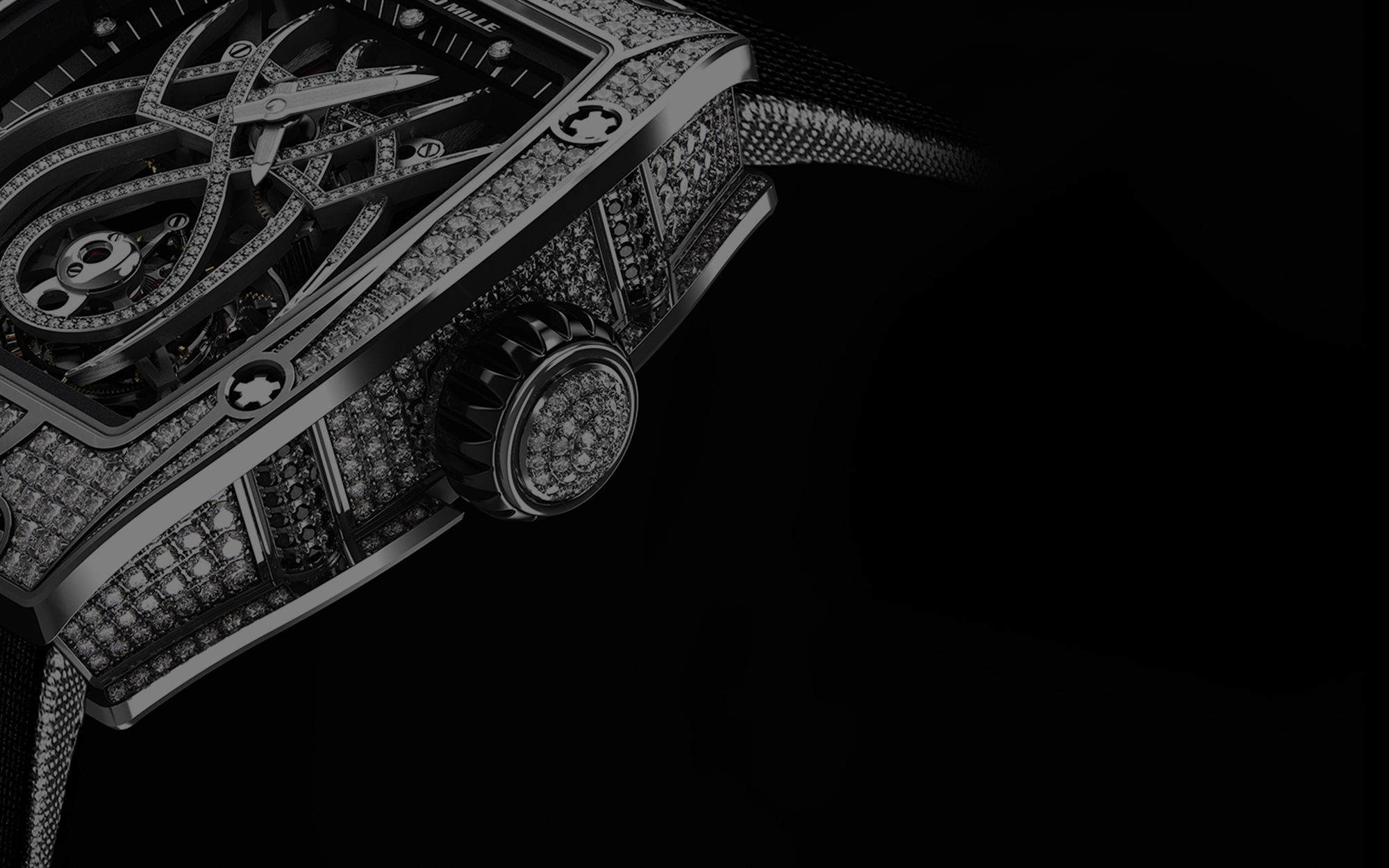
RM 19-01
Calibre RM19-01
Manual winding tourbillon movement with hours, minutes and power-reserve indicator.
Limited edition of 20 timepieces.
A dazzling expression of the Richard Mille style, this jewellery tourbillon combines the mastery of gem-setting with watchmaking precision. While sometimes terrifying at first glance, spiders are in fact a symbol of motherhood as they are incredibly protective of their offspring. Spiders fascinate us with their strong symbolic power, as witnessed by the abundance of myths and stories about these creatures that can be found in every civilization around the world. The RM 19-01 combines strong associations with complex undertones, all expressed through the diamond-studded and encrusted outline of a spider.
The RM19-01 manual winding tourbillon calibre is assembled around a black rhodium-plated, 18K white gold baseplate set with black sapphires in a first for Richard Mille. The spider within the movement, also in 18K white gold and delicately set with diamonds, forms an integral part of the movement, with the abdomen of the spider supporting the bridges of the tourbillon and its legs supporting the two winding barrels.
This aesthetic achievement was only possible after a long and difficult machining process followed by many hours of hand polishing, finishing and the guiding eye of the watchmaker working in harmony with the age-old expertise of the jewel setter.
